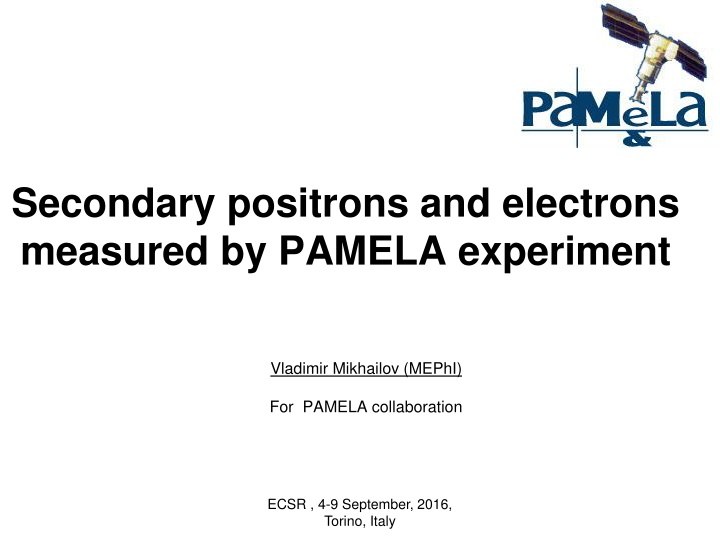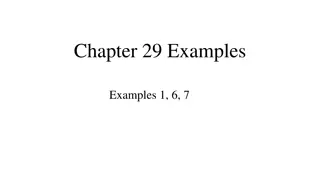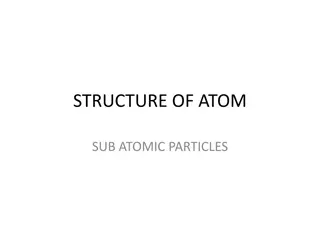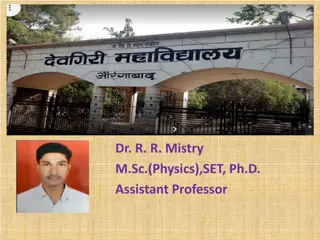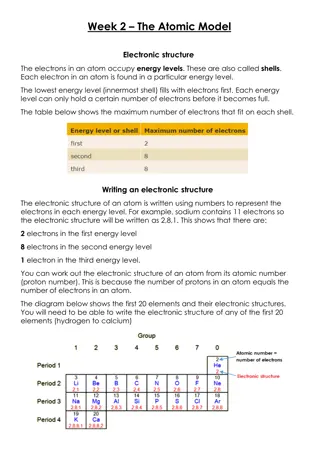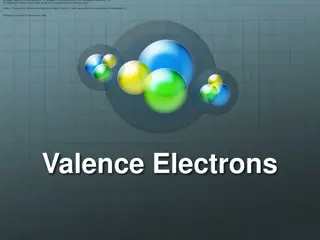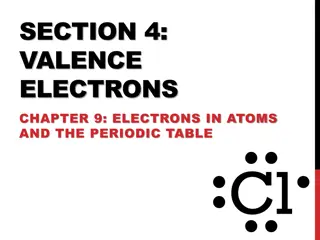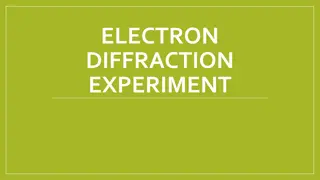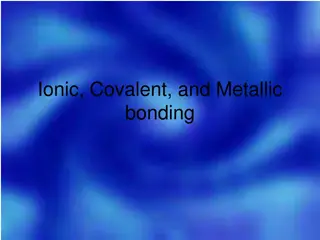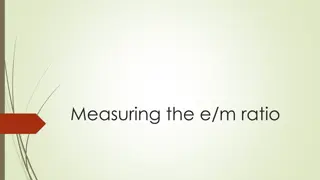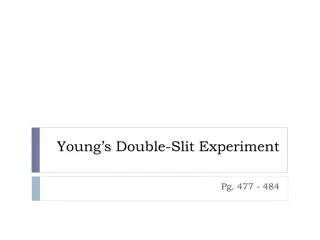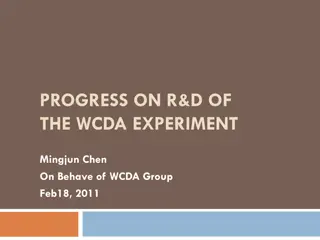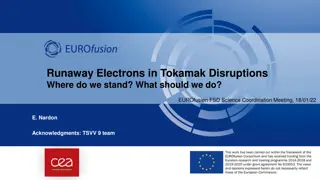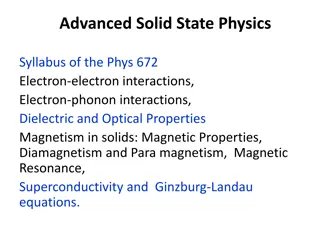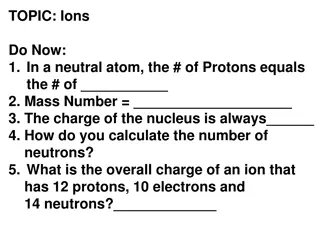PAMELA Experiment Findings on Positrons and Electrons
The PAMELA experiment, led by Vladimir Mikhailov, measured secondary positrons and electrons, revealing insights into cosmic ray interactions and magnetosphere dynamics. Collaborative efforts and satellite data analysis enhanced our understanding of particle behavior in Earth's magnetic field, showcasing significant advancements in space research.
Download Presentation

Please find below an Image/Link to download the presentation.
The content on the website is provided AS IS for your information and personal use only. It may not be sold, licensed, or shared on other websites without obtaining consent from the author.If you encounter any issues during the download, it is possible that the publisher has removed the file from their server.
You are allowed to download the files provided on this website for personal or commercial use, subject to the condition that they are used lawfully. All files are the property of their respective owners.
The content on the website is provided AS IS for your information and personal use only. It may not be sold, licensed, or shared on other websites without obtaining consent from the author.
E N D
Presentation Transcript
Secondary positrons and electrons measured by PAMELA experiment Vladimir Mikhailov (MEPhI) For PAMELA collaboration ECSR , 4-9 September, 2016, Torino, Italy
PAMELA Collaboration Italy: CNR, Florence Bari Florence Frascati Naples Rome Trieste Russia: Moscow St. Petersburg Germany: Sweden: Siegen KTH, Stockholm
~500 km Primary cosmic ray ~40 km Atmospheric boundary N. Grigorov Possibility of existence of a radiation belt around the earth consisting of electr.ons with energies of 100 MeV and above. Soviet Physics Doklady, Vol. 22, p.305, 1977 Production of charged pions in CR protons interaction with residual atmosphere Trapping of secondary particles by the Earth magnetic field livetime T(h)~ 1/ (h) Intensity Ie(h) ~Icr (h) T(h)~ / Ie(h) ~ constant (h) from ~100 to ~1000 Basilova et al. 1978 Kurnosova et al.1979: first measurements Galper et al 1983 : electron excess in SAA
The PAMELA Experiment Resurs DK satellite built by the Space factory TsSKB Progress in Samara (Russia) PAMELA is here Satellite elliptical polar orbit with inclination 700, altitude 350-610km. altitude ~570km from September 2010 was launched 15.06.2006 on Mass: 6.7 tons Height: 7.4 m Solar array area: 36 m2 Circular orbit with Since July 2006 till Junuary 2016: ~3200 days of data taking ~50 TByte of raw data downlinked ~9 109triggers recorded and analyzed Trigger rate ~25Hz (outside radiation belts) Event size (compressed mode) ~ 5kB 25 Hz x 5 kB/ev ~ 10 GB/day
Spectra in different parts of magnetosphere Analyzed data July 2006 November 2009 (~1400 days) Identified ~ 1 106electrons and ~ 1 105positrons between 50 MeV and 100 GeV Trapped protons in SAA. Magnetic polar cups ( galactic protons) S3 count rate, au Secondary re-entrant- albedo protons Latutude, deg Longitude, deg Geomagnetic cutoff
Positron to electron ratio for secondary particles AMS-01 experiment (1998) Result of AMS-01 confirmed by PAMELA Adriani et al , JGR ,2009 Due to East-West effect ratio e+/e- is about ~5 In near equatorial region
Data analysis Trajectories of positrons and electrons were reconstructed in the Earth's magnetic field IGRF field model was used (http:/nssdcftp.gsfc.nasa.gov) Boundary : Losses in atmosphere Hmin=30 km, Escaping Time of tracing (correspond to drift time around the Earth for particles with energy E~100 MeV) Z, 1000 Hmax=20000 km Tmax=35 second Y, 1000 X, 1000 Reconstructed trajectories of electrons and positrons detected by PAMELA during several orbits The method of tracing was used previously in AMS-01 experiment
Samples of particles trajectories: Simple reentrant albedo: Altitude vs latitude Z, 1000 , 1000 , 1000 Trajectory of re-entrant albedo positrons with rigidity R=1.24 GV Time of flight ~0.1 s
Quasi-trapped particles: Z, 1000 Y, 1000 X, 1000 Positron trajectory with rigidity R~0.5 GV Positron trajectory with rigidity R~1.2 GV, Time of flight >>0.1 s at R<1GV. The time is decreasing with R increasing
Trapped positron Z, 1000 , 1000 , 1000 Altitude vs longitude. Minimal trajectory altitude is in South Atlantic Anomaly region. Positron trajectory with rigidity R~1 GV, pitch-angle about 90 .
Quasi-trapped particle near geomagnetic cut-off Positron trajectory with rigidity R=2.24 GV, with small pitch-angle
Cosmic ray trajectory near geomagnetic cut-off Chaotic trajectory of non-adiabatic type .
Electron and positron flight time in magnetosphere Cosmic ray (CR) selected by Hmax>20000 km The flight time versus energy from the tracing of leptons. Difference with AMS-01: More wide interval of altitudes (350-600 km), possibility to work in SAA. There is trapped component with very long flight time
Re-entrant albedo: point of origin PAMELA AMS-01 electrons positrons M. Agular, et al. Physics Reports. 2002. V. 366. P. 331
Quasi-trapped albedo: points of detection positrons electrons
Quasi-trapped particles: points of origin PAMELA AMS-01 electrons positrons
Positron to electron ratio vs energy PAMELA AMS-01 Ek(GeV)
Stably trapped particles: points of detection positrons electrons
Space distribution of trapped particles positrons electrons
Space distribution of trapped particles
Geomagnetic coordinates L-B of detected trapped particles
Sources of trapped electrons and positrons with E>10 MeV Gusev et al, 2001, 2004 :TP source are limited in spatial distribution at around L=1.2 0.1 with the energy spectrum showing a steep cutoff at energy of about ~ 300 MeV. The calculated e+/e- flux ratios in the belt due to this source are high and attain values of 7 in the energy range of 10 to 500 MeV. The simulated results for the CR source, at the center of the positron belt, are about 100 times lower than the positron fluxes of the TP origin at L=1.2. CR interaction with residual atmosphere Trapped proton (TR) interactions
Ratio of positrons to electrons vs L-shell for trapped particles
Ratio of positrons to electrons vs L-shell for trapped particles CR source CR source
ratio e+/e- in LB coordinates for trapped particles Altitude increasing
ratio e+/e- in LB coordinates for trapped particles Altitude increasing 0.18<B<0.2 G , 1.12<L<1.3
Energy distributions of trapped electrons and positrons 0.18<B<0.2 G , 1.12<L<1.3
Conclusion 1. Particle tracing in magnetosphere selects - cosmic ray - re-entrant albedo - quasitrapped - trapped electron and positron 2. Charge composition of stably trapped particles in radiation belt differs from longlived quasitrapped component 3. PAMELA detects more electrons then positrons on boundary of radiation belt at E <0.5 GeV
PAMELA detectors Main requirements high-sensitivity antiparticle identification and precise momentum measure + - Time-Of-Flight plastic scintillators + PMT: - Trigger -Albedo rejection; - Mass identification up to 1 GeV; - Charge identification from dE/dX. Electromagnetic calorimeter W/Si sampling (16.3 X0, 0.6 I) - Discrimination e+ / p, anti-p / e- (shower topology) - Direct E measurement for e- Neutron detector 3He tubes + polyethylene moderator: - High-energy e/h discrimination GF: 21.5 cm2sr Mass: 470 kg Size: 130x70x70 cm3 Power Budget: 360W Spectrometer microstrip silicon tracking system + permanent magnet It provides: - Magnetic rigidity R = pc/Ze - Charge sign - Charge value from dE/dx
e+/e- 0.18<B<0.2 , 1.18<L<1.13
